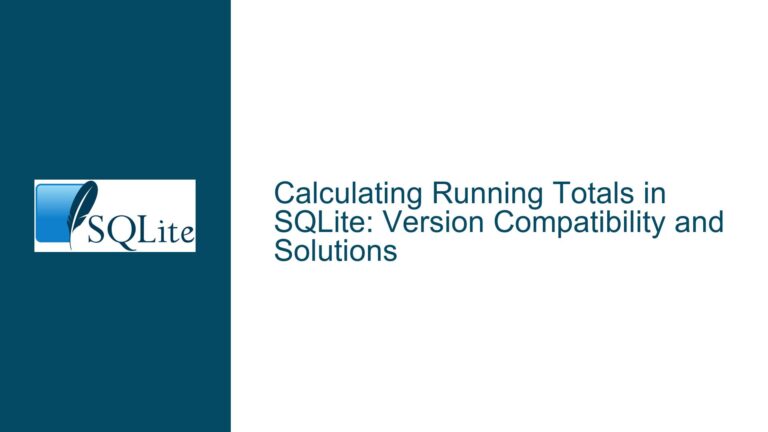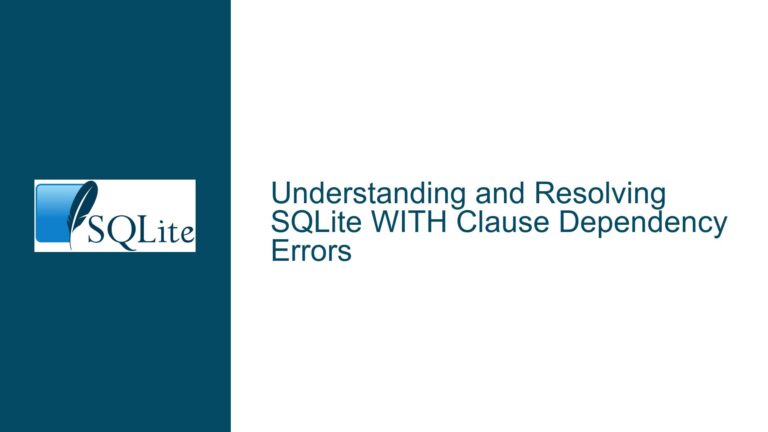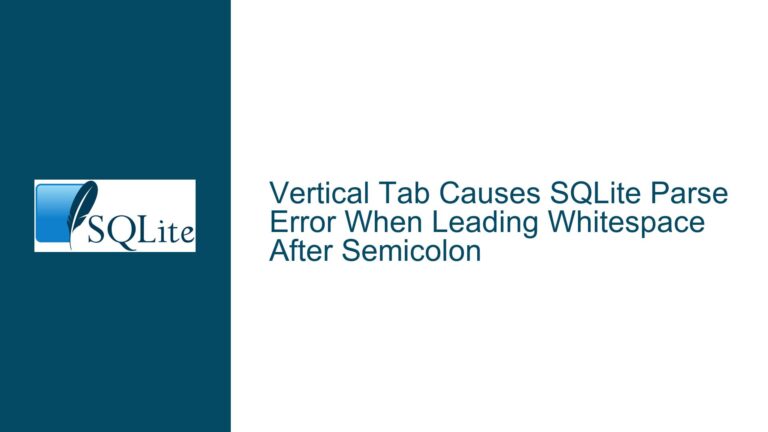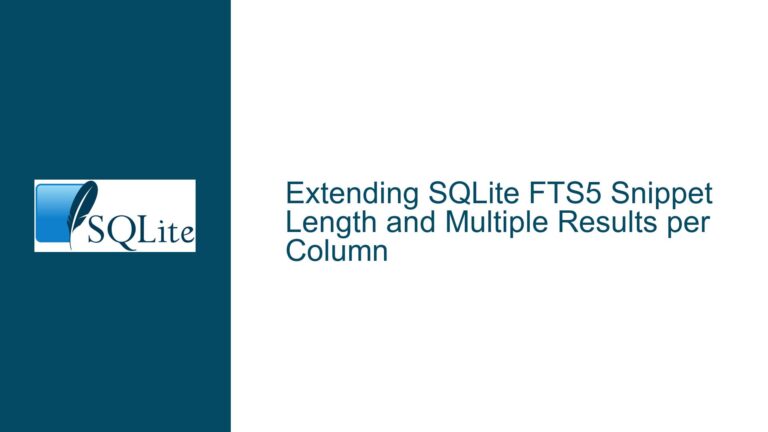Summing Time Fields in SQLite: Challenges and Solutions
Understanding the Problem with SUM() on Time Fields
The core issue revolves around the inability to directly sum time fields stored in the hh:mm:ss format in SQLite. Time fields, when stored as strings or in a time-specific format, do not behave like numeric fields. This means that arithmetic operations like summation cannot be performed directly on them. The challenge is to convert these time values into a numeric format that can be summed and then convert the result back into a human-readable time format.
The table in question, laufdaten, contains a column Zeit_gelaufen which stores running times in the hh:mm:ss format. The goal is to sum all the values in this column to get a total running time. However, attempting to use the SUM() function directly on Zeit_gelaufen results in a NULL value, indicating that SQLite does not recognize the time strings as summable entities.
The Role of Unixepoch in Time Calculations
To address this issue, the concept of Unix epoch time comes into play. Unix epoch time, or Unix timestamp, is a system for describing a point in time as the number of seconds that have elapsed since 00:00:00 UTC on 1 January 1970. This numeric representation of time is ideal for performing arithmetic operations, including summation.
The strategy involves converting each Zeit_gelaufen value from its hh:mm:ss format into a Unix epoch timestamp. This conversion is achieved using the unixepoch() function in SQLite. Once the time values are in Unix epoch format, they can be summed directly. After the summation, the result is converted back into the hh:mm:ss format using the time() function.
Implementing the Solution: Step-by-Step Guide
The solution requires a multi-step process:
Conversion to Unix Epoch Time: Each
Zeit_gelaufenvalue is converted to a Unix epoch timestamp. This is done by subtracting the Unix epoch timestamp of00:00:00from the Unix epoch timestamp of theZeit_gelaufenvalue. This subtraction yields the number of seconds since midnight, which is a numeric value that can be summed.Summation of Unix Epoch Times: The converted Unix epoch times are summed using the
SUM()function. This gives the total number of seconds for all the running times combined.Conversion Back to Time Format: The summed Unix epoch time is then converted back into the
hh:mm:ssformat using thetime()function. This function interprets the summed seconds as a time duration since midnight and formats it accordingly.
The SQL query that accomplishes this is:
SELECT time(sum(unixepoch(Zeit_gelaufen) - unixepoch('00:00:00')), 'unixepoch') AS Total_zeit_gelaufen
FROM laufdaten;
This query effectively sums all the Zeit_gelaufen values and returns the total in the desired hh:mm:ss format.
Handling Edge Cases: Time Values Exceeding 24 Hours
One important consideration is the handling of time values that exceed 24 hours. The time() function in SQLite wraps around at 24 hours, meaning that a time value of 25:00:00 would be displayed as 01:00:00. To avoid this, the total number of seconds can be divided by the number of seconds in a day (86400) to determine the number of full days, and the remainder can be converted back into the hh:mm:ss format.
The modified query to handle this scenario is:
SELECT sum(unixepoch(Zeit_gelaufen) - unixepoch('00:00:00')) / 86400 AS Days,
time(sum(unixepoch(Zeit_gelaufen) - unixepoch('00:00:00')), 'unixepoch') AS HH_mm_ss
FROM laufdaten;
This query returns both the number of full days and the remaining time in hh:mm:ss format, ensuring that the total running time is accurately represented even when it exceeds 24 hours.
Practical Considerations and Best Practices
When working with time fields in SQLite, it is crucial to ensure that the data is stored in a consistent and parsable format. The hh:mm:ss format is ideal for time durations, but it must be handled correctly to perform arithmetic operations. The use of Unix epoch time as an intermediary format is a powerful technique that leverages SQLite’s date and time functions to achieve the desired results.
Additionally, it is important to validate the time values before performing conversions. Invalid time formats or null values can lead to errors or incorrect results. Implementing data validation checks can help maintain the integrity of the calculations.
Conclusion
Summing time fields in SQLite requires a nuanced approach that involves converting time values to a numeric format, performing the summation, and then converting the result back to a time format. By leveraging the unixepoch() and time() functions, it is possible to achieve accurate and meaningful results. Handling edge cases, such as time values exceeding 24 hours, ensures that the solution is robust and reliable. With these techniques, SQLite users can effectively perform arithmetic operations on time fields, unlocking new possibilities for data analysis and reporting.






